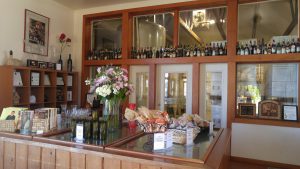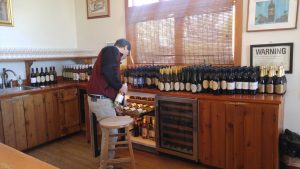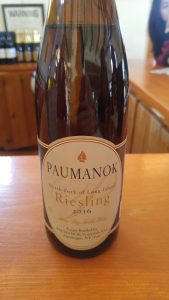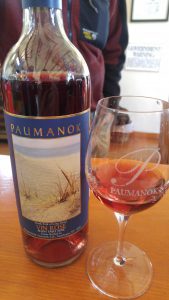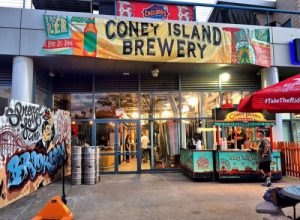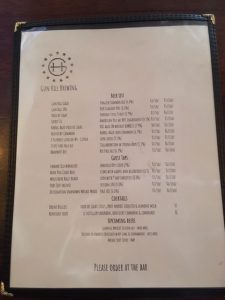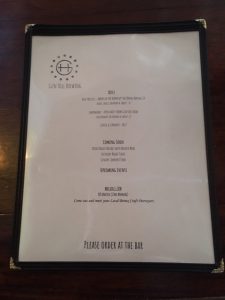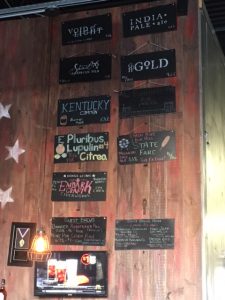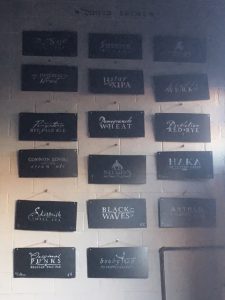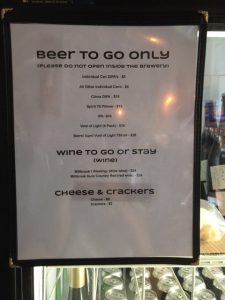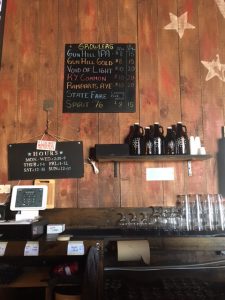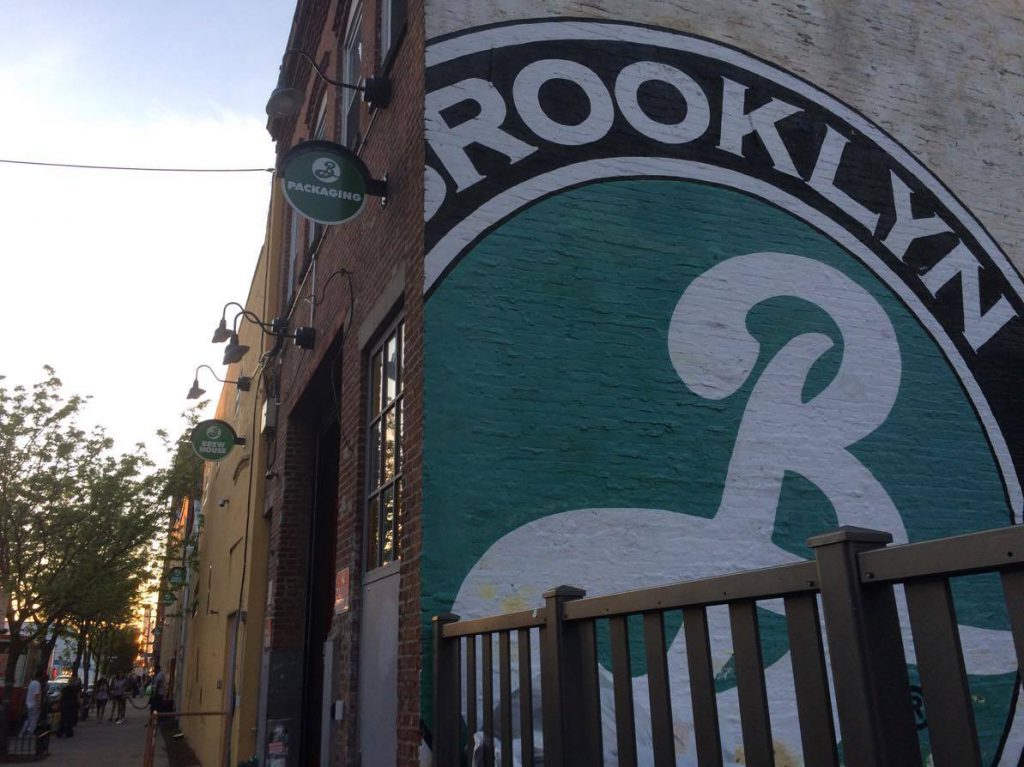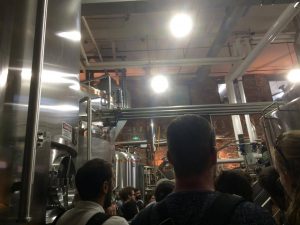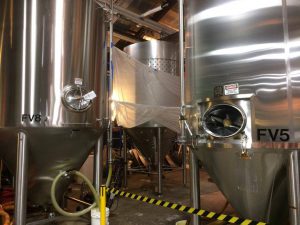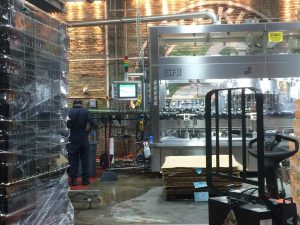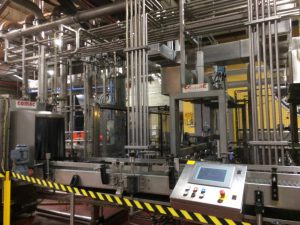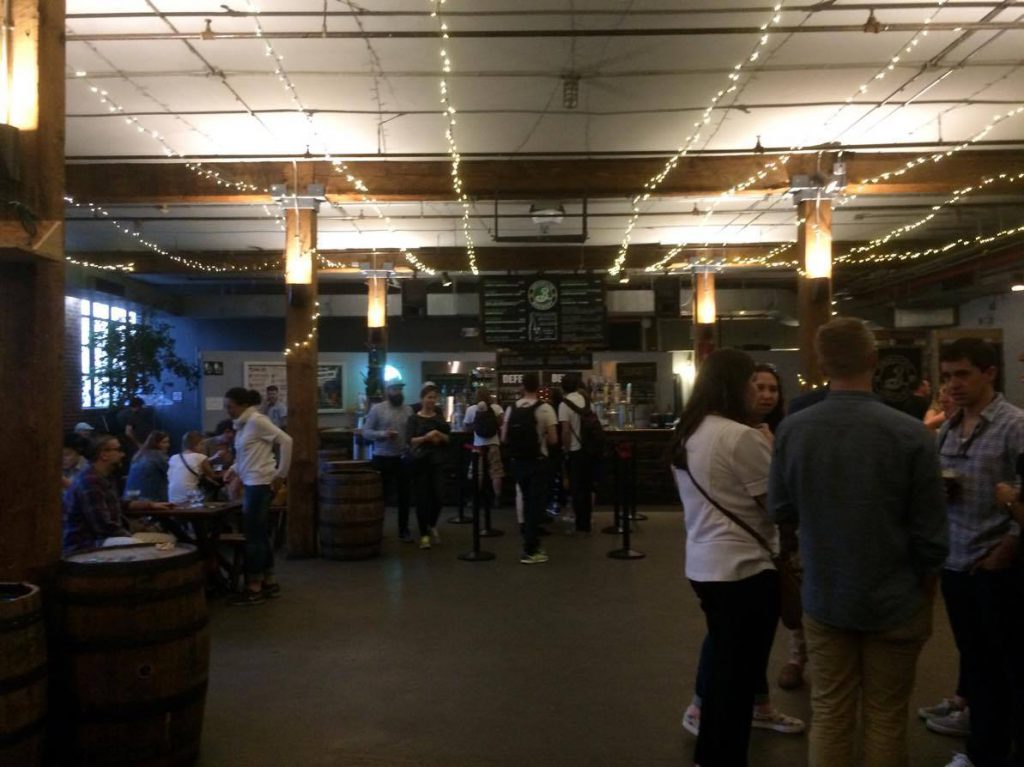It was a beautiful sunny day with some hint of coldness in April. I drove all the way down to Long Island where the vineyard is located. It was a long driving. It took me almost 1 and a half hour to get to the vineyard. The vineyard is called Paumanok Vineyard which located at 1074 Main Rd, Aquebogue, NY.
 The reason why I chose this vineyard because on their website, they only premium vinifera grapevines are planted, consisting of Chardonnay, Riesling, Sauvignon Blanc, Chenin Blanc, Merlot, Cabernet Sauvignon, Cabernet Franc and Petit Verdot. This provided description attracted to me because those are the most famous and common grape varieties in the wine world, and I thought it could be a good opportunity to see all of those famous grape varieties at one place. Also, the traditional dense planting of the vineyards at 1100 to 1400 vines per acre produces more concentrated fruit and therefore, they producing nice high-quality wines. (https://www.paumanok.com/history.html) When I and my friends arrived at the vineyard, we saw the vines were budding. The vines were empty and no grapes. I went to see more close up to the vine to observe carefully how they are budding. I saw some watery liquid was coming out from the vine’s twig and also realized the vineyard maker did vine training systems on their viticulture.
The reason why I chose this vineyard because on their website, they only premium vinifera grapevines are planted, consisting of Chardonnay, Riesling, Sauvignon Blanc, Chenin Blanc, Merlot, Cabernet Sauvignon, Cabernet Franc and Petit Verdot. This provided description attracted to me because those are the most famous and common grape varieties in the wine world, and I thought it could be a good opportunity to see all of those famous grape varieties at one place. Also, the traditional dense planting of the vineyards at 1100 to 1400 vines per acre produces more concentrated fruit and therefore, they producing nice high-quality wines. (https://www.paumanok.com/history.html) When I and my friends arrived at the vineyard, we saw the vines were budding. The vines were empty and no grapes. I went to see more close up to the vine to observe carefully how they are budding. I saw some watery liquid was coming out from the vine’s twig and also realized the vineyard maker did vine training systems on their viticulture.
The vineyard was large. It was sad I couldn’t see any single grape from those large vine trees. Then we move into the store where Robert was greeting us very kindly. We explained why we are there and he was willing to help us. I asked what is the famous wine in this vineyard and why. He said, Chenin Blanc is the famous one because only Paumanok Vineyard is producing Chenin Blanc in New York State. Also, he mentioned Semi-Dry Riesling is a popular one in the vineyard which is a sweet wine. Then we asked is the vineyard is competitive in this neighborhood because we saw some other vineyards while we were driving to Paumanok Vineyard. Robert said no it is not because there are 50 vineyards in the neighborhood and they are pretty well balanced to each other. Then we asked when will the berries will growth and harvest? Robert said it depends on the weather but the berries will begin to growth after May. Unfortunately, we could not go into the procedure room. Therefore, we decided to taste some of the famous wines from Paumanok Vineyard. There was no separate tasting room. The store, office and tasting room were in one area.
The first white wine I taste was 2015 Chenin Blanc which is the most famous wine from the vineyard. According to their website, “It was cool fermentation in stainless steel tanks. It was bottled with a screw cap to preserve freshness and cleanliness. The result is a fresh, crisp, racy, and bracing Chenin that is redolent of grapefruit and pineapple, with more subtle notes of melon, apple, and guava. It makes an excellent companion to various white meat fish dishes, such as striped bass, flounder, cod and lobsters and especially oysters.” (https://www.paumanok.com/store/)
The second wine I tried was 2016 Semi-Dry Riesling which fermented also in stainless steel tanks. According to the website, it described as “this Riesling bursts with a fresh, fruit cocktail of peach, apricot, nectarine and apples. While it starts off sweet, it finishes dry with crisp acidity. Pair it with loin of pork, Asian foods especially Thai or Indian.” I felt like this can be a great start wine as well pair with some mango flavored dressing in green salad or a dessert wine with a strawberry cheesecake (not a heavy one though). My favorite wine out of all.
The third wine I tasted was Vin Rose. The website described this wine as, “This semi-sweet blush offers beautiful, fresh aromas and flavors of strawberry and red cherry. Pair with an aperitif or with spicier fare such as Asian Foods.”(https://www.paumanok.com/store/) The website does not say cranberry, but I smelled cranberry and tasted some rose.
It was such a good experience to see the vineyard by myself than just study and read the materials. Now I can imagine where the vines are grown and how will be harvested.
References
Paumanok Vineyards. (n.d.). Retrieved May 26, 2017, from https://www.paumanok.com/
Paumanok Vineyard Is NY Winery of the Year. (2015, August 14). Retrieved May 26, 2017, from http://www.ediblelongisland.com/2015/08/14/paumanok-vineyard-ny-winery-year/
Vintners, N. V. (n.d.). The Life Cycle of A Grape. Retrieved May 26, 2017, from https://napavintners.com/napa_valley/life_cycle_of_a_grape.asp
The Chenin Blanc Wine Guide. (2017, May 01). Retrieved May 26, 2017, from http://winefolly.com/review/chenin-blanc-wine-guide/


